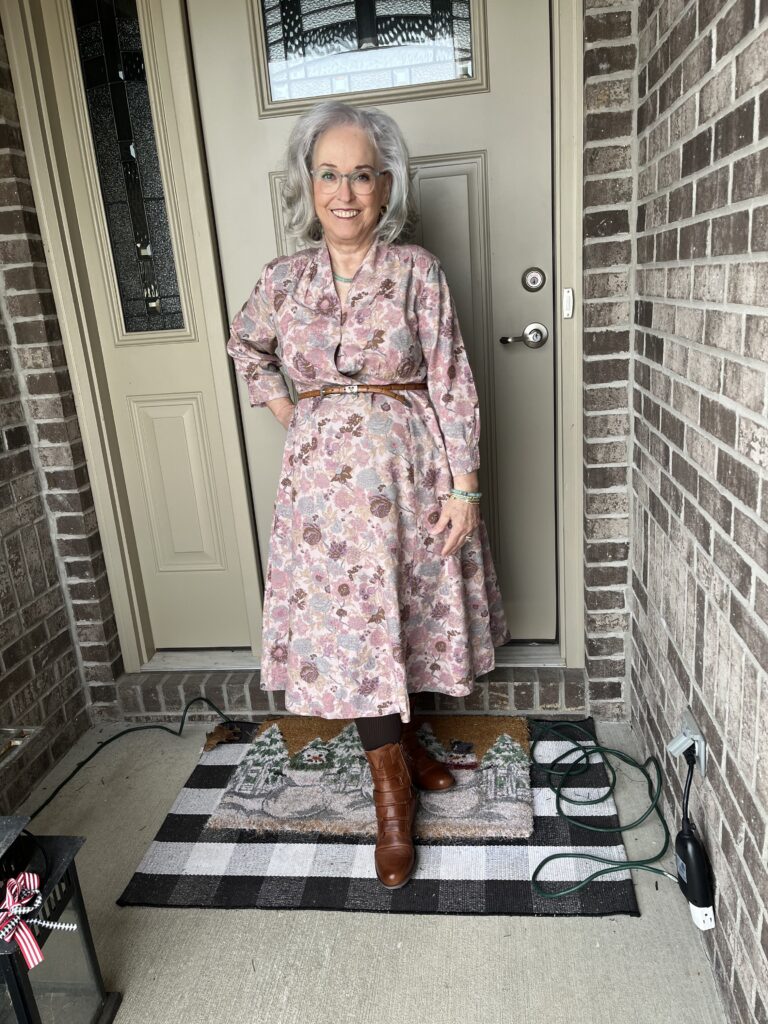
Style Imitating Art…
Welcome to Style Imitating Art which comes from Salazar, Shelbee, and me. You can think of this series as fashion meets art museum! SIA challenges people to find inspiration in different art works, create looks based upon that art work, and share them with the curator for that piece. I am this week’s curator with a lovely piece of art. I hope you enjoy this post, the information, and my interpretation.

How it works…
Every other Monday one of us selects an inspiration piece of art and posts the image on their blog. We then invite others to interpret that art work through their style. The following Monday, we share our outfits. The curator shares submissions the following Wednesday on her blog. I chose this week’s art work for this round of Style Imitating Art. If you’d like, you can read why I chose it here. Please send your photo to me by Tuesday, January 28th, 2025 by 10 pm EST. Style Imitating Art is an interesting way to inspire your outfits. You can see a few of my looks here, here, here, and here.
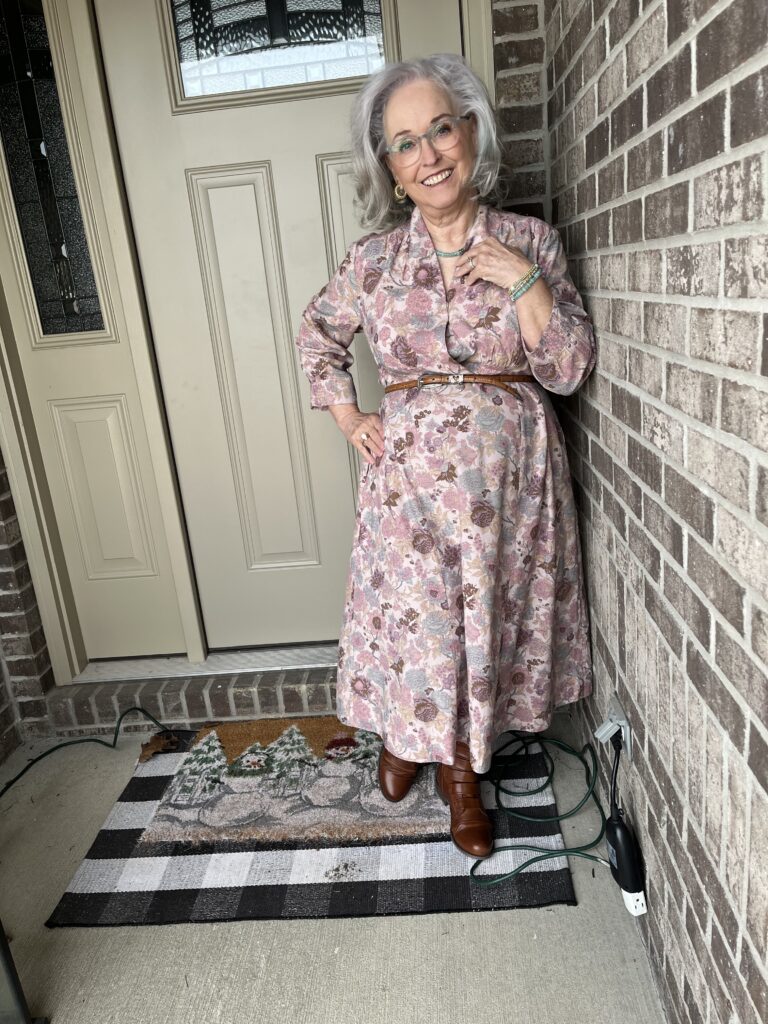
About the artist…
Alfons Maria Mucha, known around the world as Alphonse Mucha, was born on July 24, 1860 in Ivančice in a province of the Austrian Empire. This area is currently known as the Czech Republic. His father was a court usher; his mother was a miller’s daughter. Alphonse and I have a bit in common. He and all of his five siblings (he was the oldest) had names beginning with A. All of my siblings’ names begin with MAR! His artistic ability showed up early; a local merchant gave him a gift of paper which as a luxury item at the time. While in preschool, Mucha drew exclusively with his left hand. I’m kinda surprised they didn’t try to switch him, but that may be a US thing. In addition to his drawing abilities, Mucha was also talented in music. He was an alto as well as played the violin. Following Volksschule (compulsory schooling), Mucha was unable to continue his studies as his family couldn’t afford it.
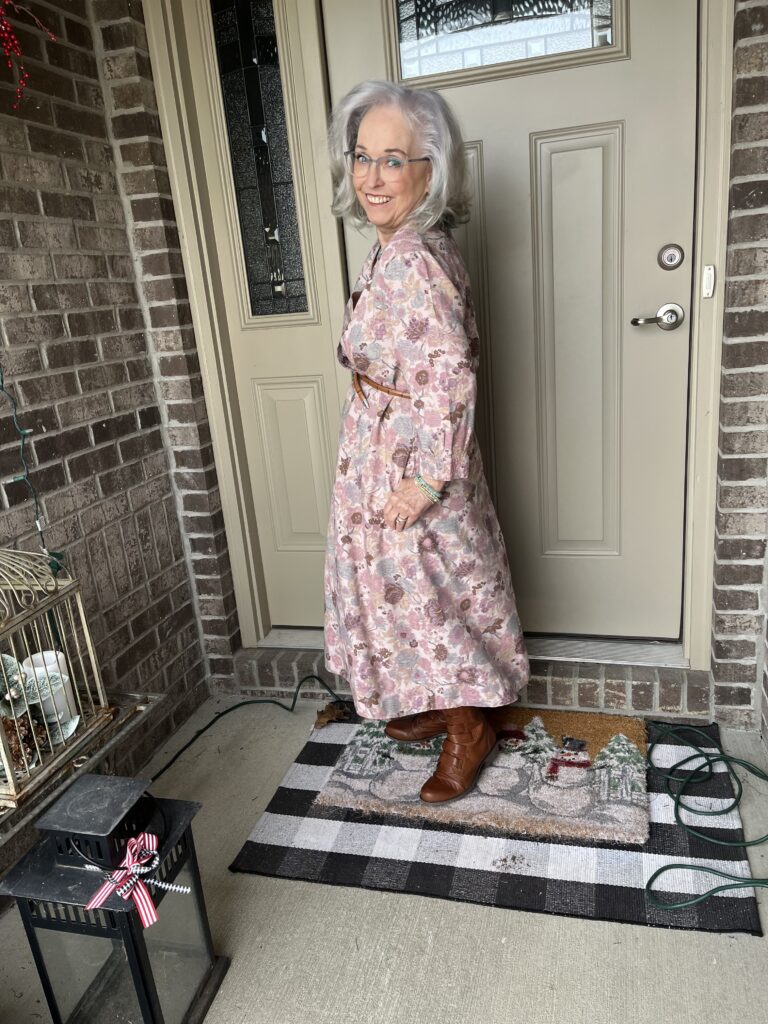
A little more…
Mucha’s musical talent first sent him to St. Thomas’s Abbey in Brno, but the choirmaster, Pavel Křížkovský, couldn’t provide for him as his funds had already been used for another student. Instead, he sent Mucha to the Cathedral of St. Peter and Paul. He was admitted as a chorister with his studies funded for the gymnasium (AKA secondary school) in Brno. His voice eventually broke, but he stayed on as a violinist during mass. Mucha was extremely devout and once wrote, “For me, the notions of painting, going to church, and music are so closely knit that often I cannot decide whether I like church for its music, or music for its place in the mystery which it accompanies.” Luckily, he grew up in a time when Czech nationalism displayed itself in all the arts, from music to literature and painting.

Still more…
Mucha, while continuing his musical education, realized his true passion was art. To make money, he began designing for theaters. In 1878, he applied to the Academy of Fine Arts in Prague but was rejected and even told to find “a different career.” In 1880, he moved to Vienna where he found work as an apprentice scenery painter. He explored the museums, churches, palaces and theaters of this political and cultural capital of the Empire. It was during this time, he discovered Hans Makart who created many of the murals decorating palaces and government buildings in Vienna. Makart’s portraits and historical paintings influenced the young artist. Mucha also took to photography which would become important part of his later work.
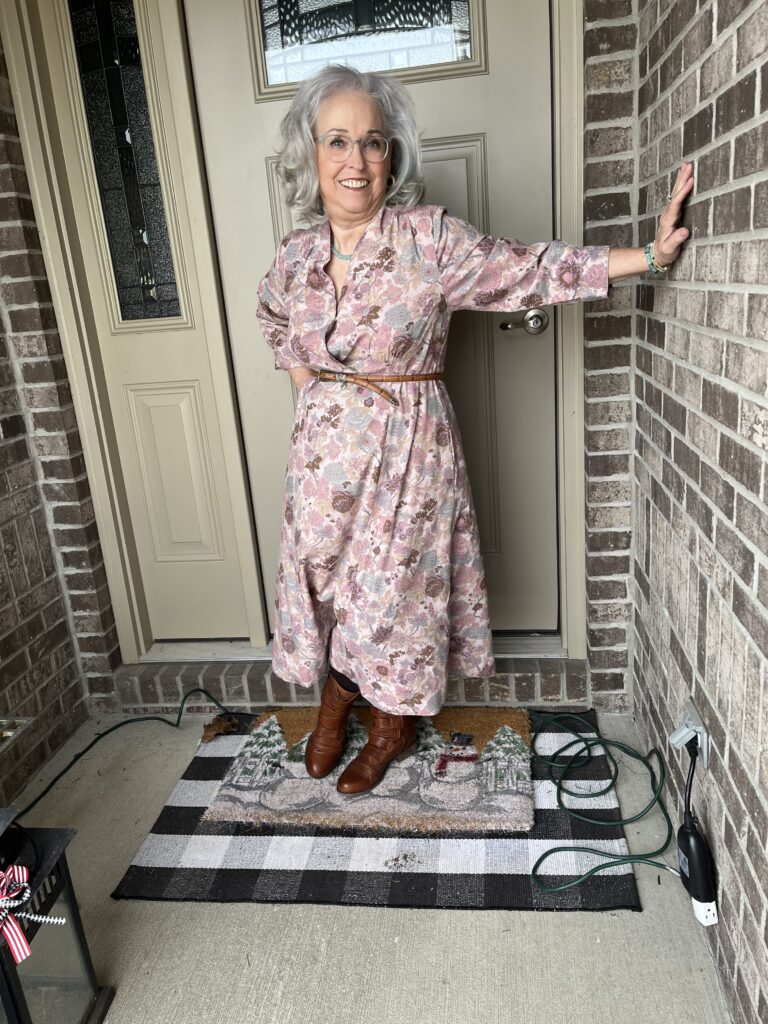
Even more…
Eventually, Mucha would make his way to Paris, connecting with a Slavic community. He would go on to illustrate many different magazines and novels. As he began to make money from these illustrations, Mucha was also able to purchase a camera. He would photograph himself and others then use those photos to create drawings. He continued to illustrate books and magazines, earning commissions for more and more grand projects. In the early 1890s, the Central Library of Fine Arts employed Mucha. Here, he was in on the early development of Art Nouveau.

A skosh more…
Near the end of 1894, Mucha began his work with Sarah Bernhardt, the famous French actress. In December of that year, Bernhardt was in the play, Gismonda. She wanted a new poster for this play, but most of the artists who regularly supplied such posters were unavailable. Bernhardt, herself, called Mucha at the publishing house for the Central Library. He had already been painting Bernhardt with a series of illustrations for another play. Mucha had to quickly create this new poster as it was needed by January 1, 1895. The poster had several requirements. Due to time constraints, many areas of the poster were blank, but it did feature the delicate pastel colors we see in our art work. As a result of his work, Mucha received a six year contract to produce more posters for Bernhardt. As those posters appeared all over Paris, Mucha was suddenly quite famous. In addition to the posters, Mucha designed the programs, sets, costumes, and jewelry for Bernhardt.
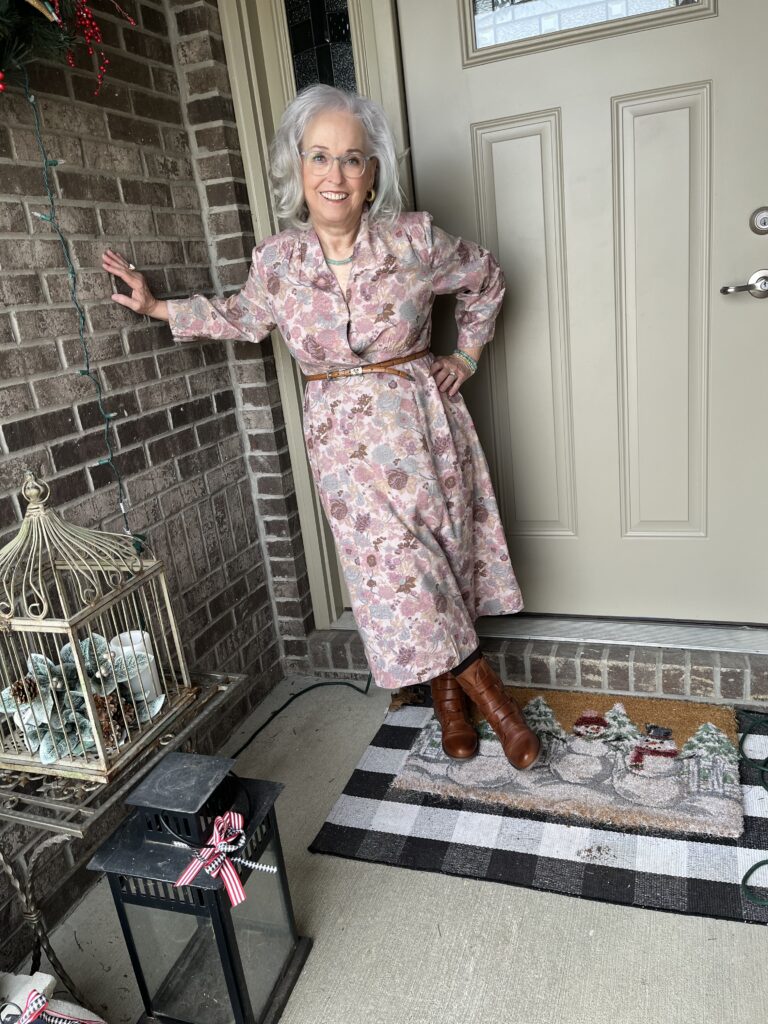
A bit more…
Mucha continued to produce posters, growing more and more popular and wealthier. The art world began to take notice of this artist, and Mucha was invited to exhibitions and to show his work in salons. It was during this time, Mucha really honed his style as Art Nouveau. He created murals for buildings and was a very busy man for several years, including creating more jewelry. You can read so much more here. In 1904, Mucha left for America and remained there until 1909. He said:
“You must have been very surprised by my decision to come to America, perhaps even amazed. But in fact I had been preparing to come here for some time. It had become clear to me that that I would never have time to do the things I wanted to do if I did not get away from the treadmill of Paris, I would be constantly bound to publishers and their whims…in America, I don’t expect to find wealth, comfort, or fame for myself, only the opportunity to do some more useful work.”
A tiny bit more…
During this time, he married and had a child. Mucha taught at various places in the US. He also accepted a few commissions. It was during this time, he met Maude Adams and created our art work among others. He also did more stage and costume designs. After his time in the States, Mucha returned to Prague and created the Slav Epic (information here), a cycle of twenty large canvases, between 1912 and 1926. These canvases told the history of the Slavic people, a project Mucha had always wanted to do. It was during this time WWI and a war between the Austrian Empire and France occurred. The Czechoslovak Republic was also formed during this time.
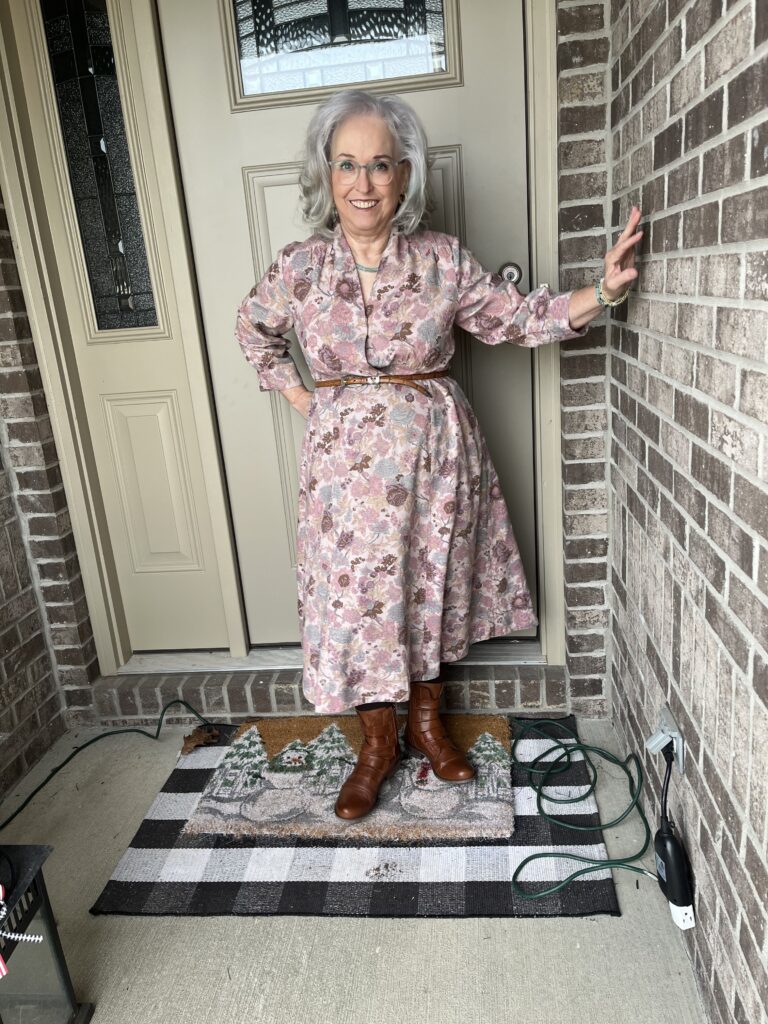
Finally…
During the 1930s, the Nazi regime threatened Czechoslovakia. Even so, Mucha began working on a triptych of the Age of Reason, the Age of Wisdom, and the Age of Love. He worked on these from 1936 to 1938 but never completed them. On March 15, 1939, the German army marched through Prague and declared the country was now part of the Greater German Reich. Mucha’s love for his Slavic home made him a target for the Nazis, and he was arrested. He was interrogated for several days and finally released. His health suffered, and he contracted pneumonia and died on July 14, 1939, just a month before the outbreak of WWII. His internment in the Slavin Monument of Vyšehrad Cemetery, reserved for notable figures in Czech culture, was attended by a large crowd. Known most for his works in the Art Nouveau movement, Mucha wanted to be known as a history painter which is a new term to me. Mucha resisted the term, Art Nouveau, because he didn’t think anything in art could ever be “new.” The Mucha Museum opened in Prague in 1998. Google celebrated Mucha’s 150th birthday on July 24, 2010 with a doodle!

The art work…
It is believed Maude Adams commissioned “Maude Adams as Joan of Arc.” If you go here, select “References,” you can read many different notes on the production of this piece of art. I tried to winnow it down, but it got very wordy and confusing. The painting itself measures 82 1/4 x 30 in. (208.9 x 76.2 cm) and is oil on canvas. The painting was the gift of A. J. Kobler in 1920 to the Metropolitan Museum of Art. It is not currently on view and cannot be lent to anyone.

My interpretation…
I actually had two ways to go with this interpretation. In the end, I decided on this April Cornell dress. It’s from a couple of years ago. My other choice was this dress shown here for another SIA challenge! And, yes, I have the same print in two different dresses. I’m trying to decide if I like the one on this post or pass it on to someone who will love it! I thought the soft pastels and the floral print were perfect for this painting. The dress is an example of the modesty snap being not quite right. I know it’s just a matter of changing one snap, but I’m afraid I will end up with a bigger problem. I’d have to get that snap in the just right place. Since I’m thinking of moving it on, it’s not really worth the bother.
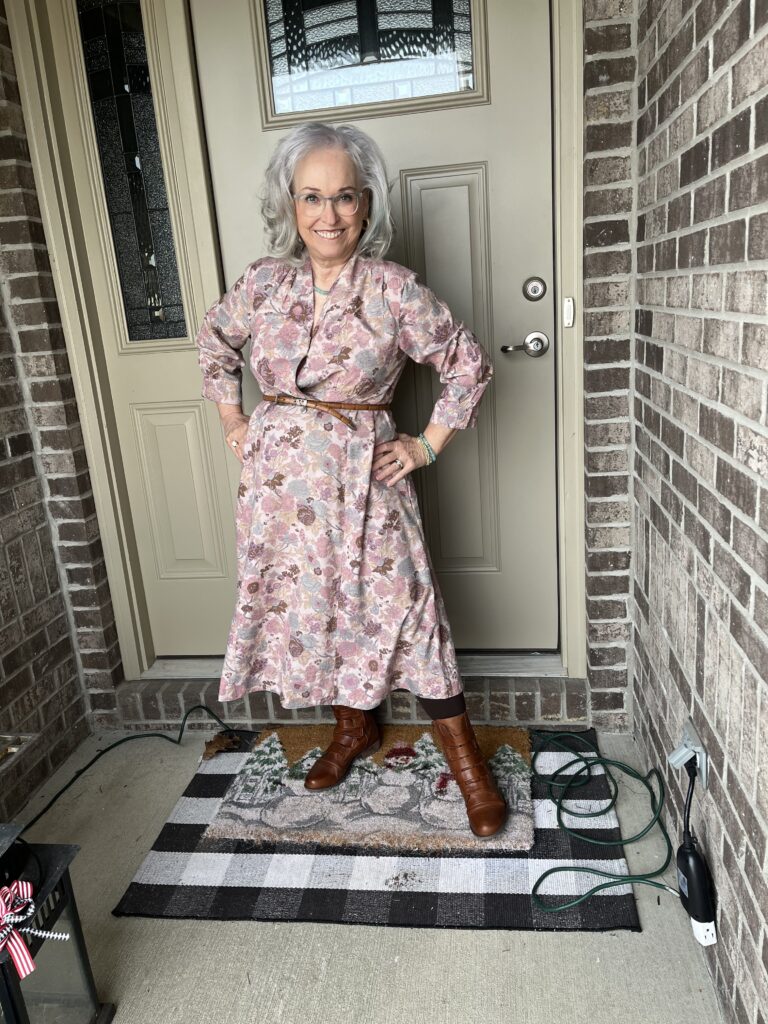
The Lewk!
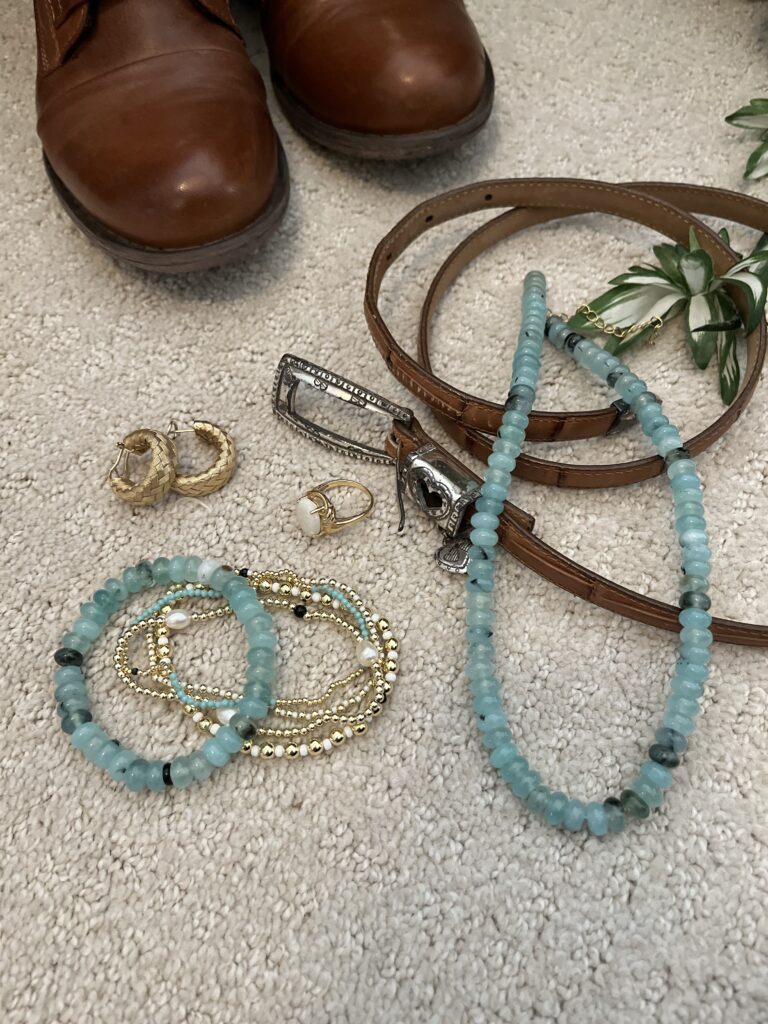
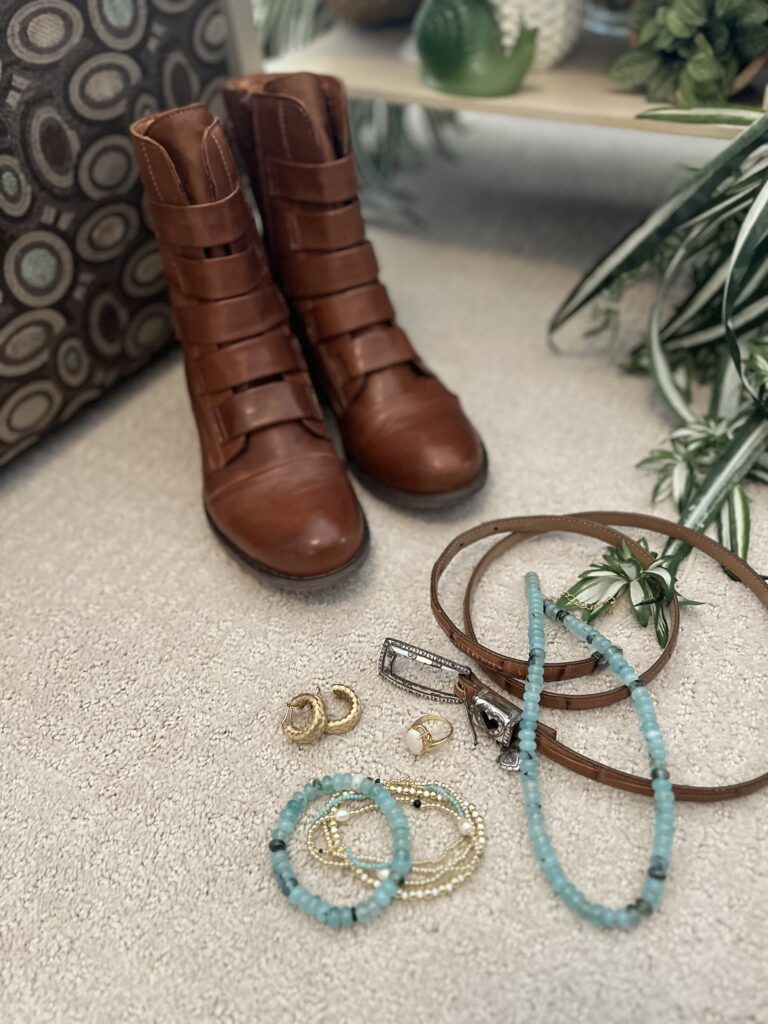
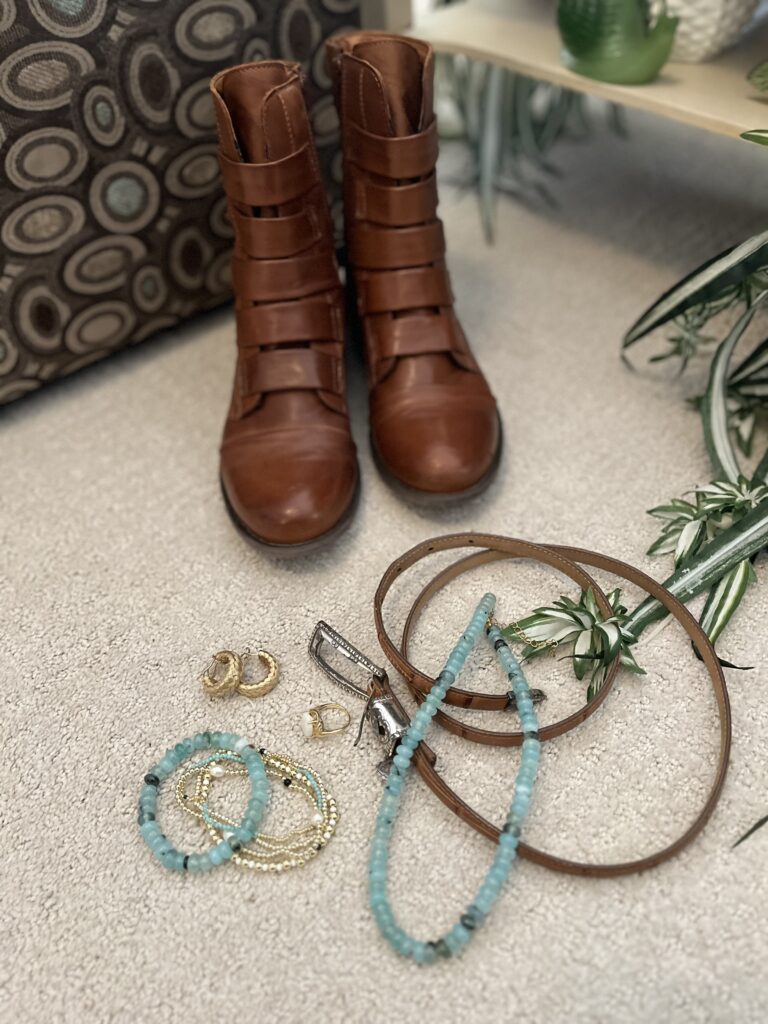
Now, what footwear? Well, the very obvious answer was my Miz Mooz Leighton boots in brandy. I wish I could find a pair of tights in that color, but brown would have to do. That pesky modesty flap really bothered me, so I threw on this narrow brandy colored Brighton belt. Next, I went looking for pastel colored jewelry. I really don’t have much, but then I found this necklace and bracelet set from Allie & Bess. Kellyann introduced me to this brand. You might be able to use her code for 20% off…it’s KELLYANN20. The stock there is constantly changing so I couldn’t link to my exact items. The earrings are gold and were a Christmas gift from Nigel years ago. The opal ring (it’s my birthstone) was also a gift from Nigel for my birthday years ago.
Wrap it up, Marsha!
I haven’t really looked for paintings in the Art Nouveau movement, but I love it in architecture. In fact, I just googled it, and what I’ve always called Art Deco is actually Art Nouveau! The biggest difference, as far as I can tell, is the lines. Art Deco is more linear and sharp while Art Nouveau is curved and organic. So, can we talk? Have you ever heard of a painter of history? What do you think of naming children with the same initial? Do you prefer Art Nouveau or Art Deco? Please leave me a comment or two, and we can talk. I promise to respond as quickly as I can.
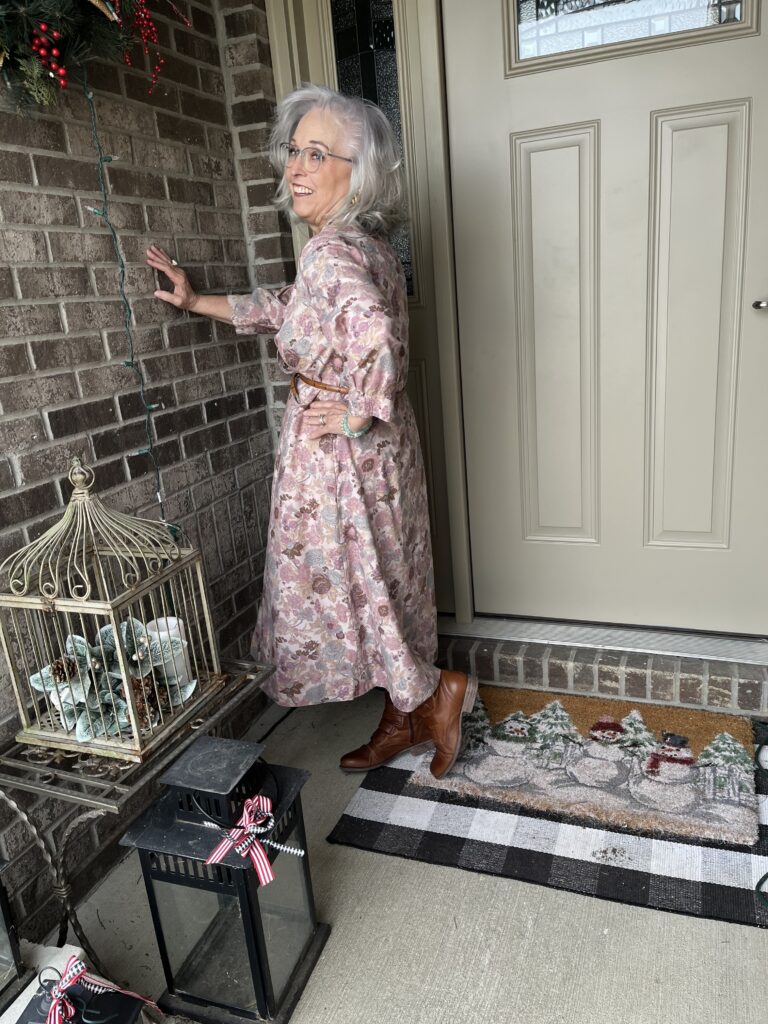
Don’t forget…
If you want to be included in the Style Imitating Art round up, send me your photo by 10:00 pm EST Tuesday, January 28th. Photos of everyone participating will appear on my blog on Wednesday, January 29th! If you’re interested in join us, consider all of your options…the colors, the lines, the florals. Come on, give it a try! I think you’ll love it!
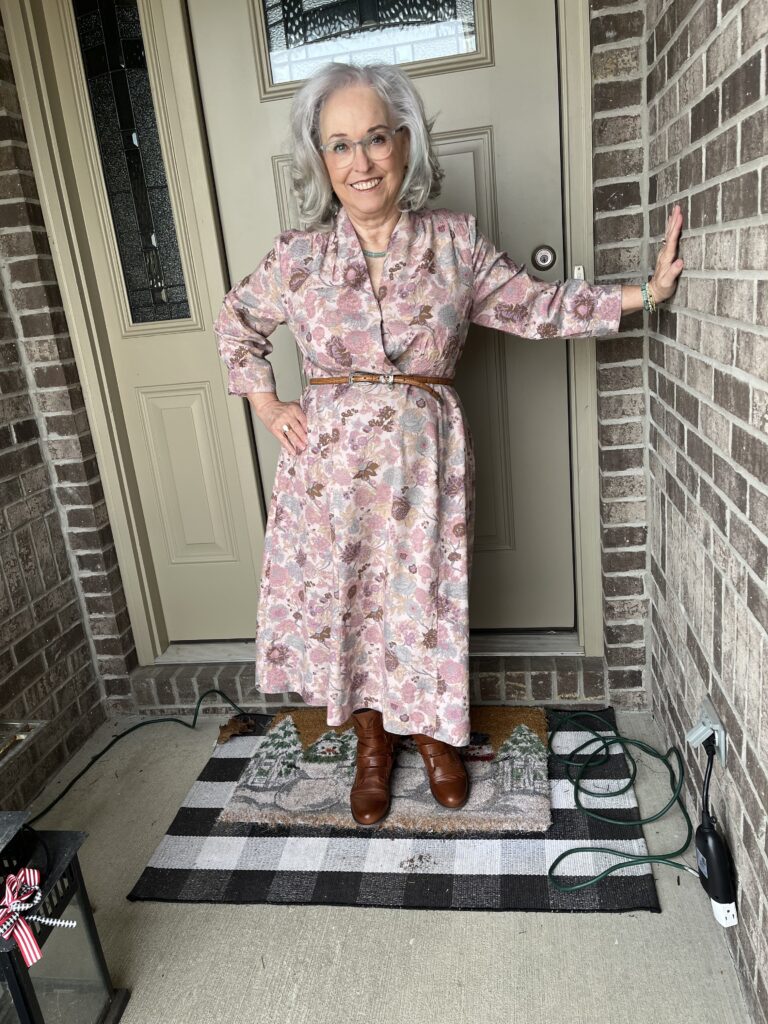
Thank you!
I want to thank all of you from the bottom of my heart for reading, commenting, subscribing or emailing! It truly means so much to me! If you’d like to follow me on Instagram, you can find me here.
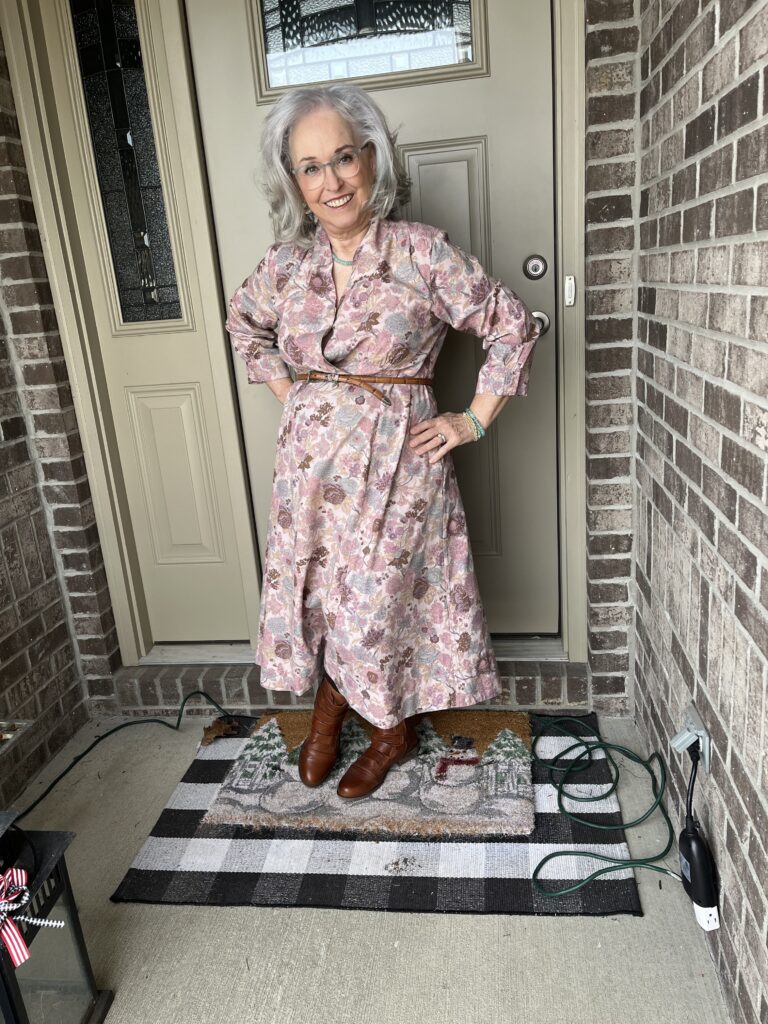
Affiliate links, discount codes and such:
Just a reminder that Marsha in the Middle may use an affiliate link. Those links are usually italicized. If you click or make a purchase from an italicized link I provide, I may receive a small commission at no cost to you. Thank you for your support. I am an April Cornell Brand Ambassador for another season. You can use my code, MARSHA15, for $15 off any order over $100 (not currently working, but working on fixing that). Use Marsha12 for 12% off any order of $65 or more at Buykud. I have also become a Halftee Partner. Use the code, MARSHA2098, for 20% off any purchase. I am also an affiliate with Clara Sunwoo. You can use my code, MARSHA10, for 10% off your entire order. In case you didn’t know, bloggers must disclose the use of affiliate links. That’s why I include this in each post.
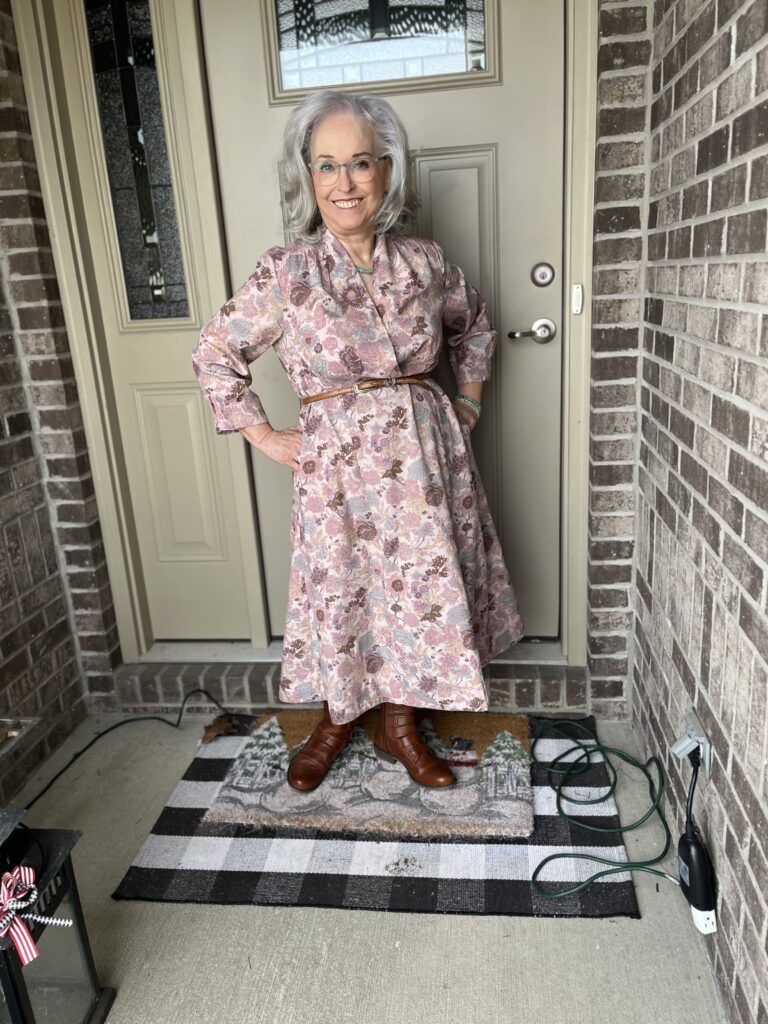
Where you can find me:
Linking up with Nancy’s Fashion Style, Fine-Whatever, Is This Mutton, Shelbee on the Edge, Chez Mireile, Suzy Turner, and Away from the Blue as well as Deb’s World and A Fresh Cup of Coffee. I also link up with This Blonde’s Shopping Bag, Doused in Pink, I do deClaire, Mummabstylish, Style Splash and Elegantly Dressed and Stylish as well as the Senior Salon Pit Stop (Esme’s Salon) and Slices of Life. Please check out these wonderful ladies and their blogs! I also am a co-host for Ageless Style on the third Thursday of the month and Songful Style on the last Monday of the month. I co-host Traffic Jam Weekend every Thursday with Melynda, Lisa, and Sue. I also host Final Fridays on the last Friday of the month as well as 10 on the 10th on the 10th of the month! I do hope you’ll check out all of these blogs and link parties!
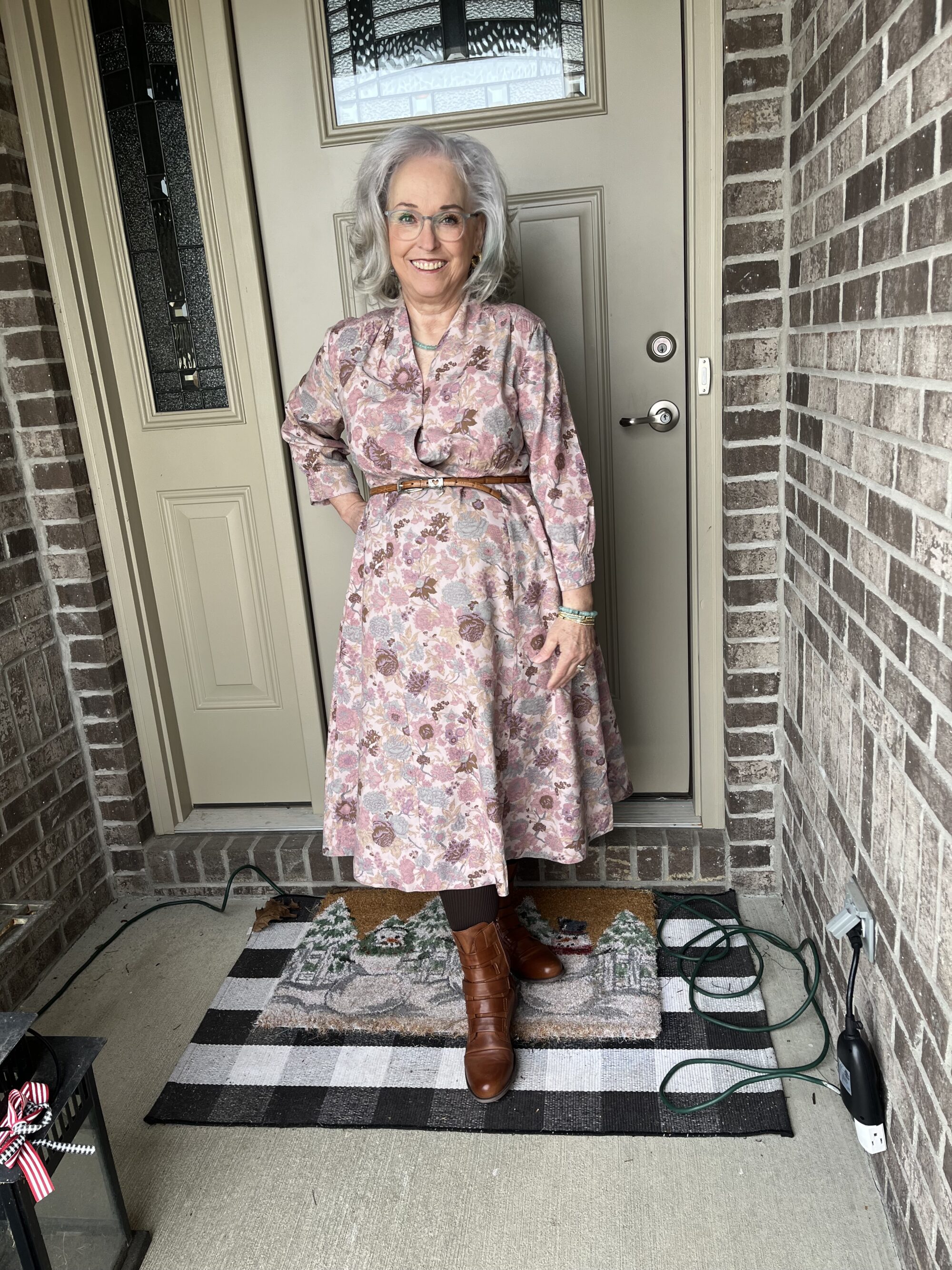
That is a very pretty dress, the colour combination is great. I’m a fan of Art Deco! Art Nouveau is earlier.
Thanks, Nancy! I can see that…your jewelry is very geometric.
Loving the tan boots with this pretty floral, I don’t think I’ve done this before. Will be trying it out now xx Jacqui x
Thanks, Jacqui! I love florals and was so happy to have something that worked so well for this challenge!
What a great dress, it works so well with the artwork.
Thank you so much, Rosie! I thought it did a wonderful job for the art, too.
There’s a meme going round saying Art Nouveau looks as if it was made by elves and Art Deco as if it was made by dwarves. I think that works pretty well.
Despite them being so different, I really love them both. It’s one reason the ex and I loved watching Poirot with David Suchet, there was so much beautiful Art Deco to see, from sculptures to vases to clocks to buildings!
I got some Art Nouveau tile magnets at a museum years ago, they are all on my fridge. They inspired to bead loom two pendants, but really Art Deco is a bit easier as bead looming is practically pixel art and it’s hard to do the rounded flowing lines.
A very pretty soft look. I like the boots.
Cat
https://catswire.blogspot.com/
Thanks, Cat! I love that analogy. It’s perfect! I do prefer David Suchet as Poirot over Kenneth Brannagh. He has so much more presence. I would imagine it is much easier doing any kind of bead work with Art Deco, but embroidery might be easy with Art Nouveau!
I think that is a very pretty and flattering dress on you. It’s perfect for this challenge.
Thanks, Joanne! I am so glad I had it!
Marsha, this dress is absolutely perfect for the artwork! I can’t get over it. That print is gorgeous and I love the soft pastels on you. I was surprised that I had never heard of this artist before. He obviously was wildly famous. I feel like I should have known about him before this! I am looking forward to the round up post for this beautiful poster!
Shelbee
Thanks, my friend! I just kept looking at the painting and remembered I had this dress (well, two dresses). Then, I took my iPad in the closet and compared them. Bingo! I had my look! The round up is gorgeous!
This dress is perfect for the painting. But I don’t understand that idea “not worth the bother” LOL. I find it a good brain workout to fix those types of issues.
But have you thought about wearing a cute cami or different color t-shirt (like the color of your boots) under it and leaving the snap open?? It might be an interesting thought?
XOXO
Jodie
Thanks, Jodie! I just meant if I was going to donate it, someone else may need the snap in a different place. I tried not snapping it, but it just falls funny then. It may be a case of my being short waisted, too. Thanks for the suggestions.
The print of this dress is perfect for the painting! I am more a fan of the geometric Art Deco than the curved Art Nouveau, I think.
Thanks, Sally! Do you find yourself looking for more geometric graphics when making your earrings, too? I honestly did not know there was a difference!
Your outfit is just lovely and perfectly captures the “essence” of the painting. Being of Czech heritage, I found the story of this artist very interesting and moving. As we commemorate the liberation of Auschwitz this week, I was particularly touched that Mucha’s death was a result of his mistreatment by the Nazi regime. Thank you for this post today!
Thank you for your kind words, Beth. I hope you read more about him on the Wikipedia page. I left out so much because I’m never sure how much people want to read. I was rather surprised the Nazis let him go at all given his reputation for being a Czech nationalist. We must never forget those camps and what happened there. Thank you for reminding me of the liberation of Auschwitz.
I think the dress is perfect for this art! I love the pale hues in both. Thanks for sharing the difference between art deco and art nouveau!
https://www.kathrineeldridge.com
Thank you, Kathrine! It took me a while to realize this dress was the one! I was surprised to discover there was a difference!